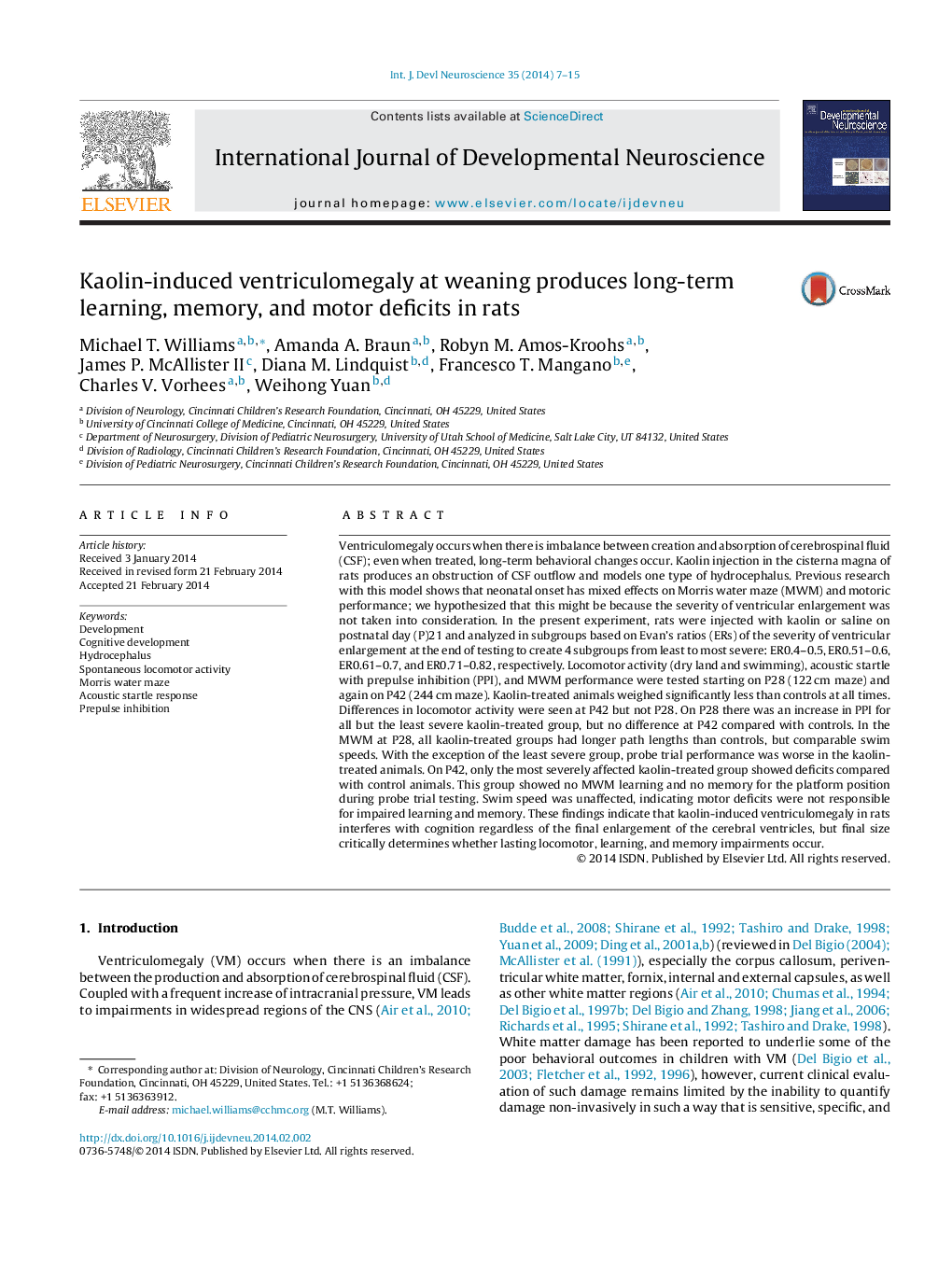| Article ID | Journal | Published Year | Pages | File Type |
|---|---|---|---|---|
| 2785989 | International Journal of Developmental Neuroscience | 2014 | 9 Pages |
•Kaolin injected on postnatal day (P)21 to induce ventriculomegaly.•Kaolin animals divided based on severity of ventriculomegaly.•Kaolin animals had increased startle response at P28 except the least severe group.•Kaolin animals had Morris water maze deficits when tested on P28.•The most severe ventriculomegaly animals were unable to learn in the MWM on P42.
Ventriculomegaly occurs when there is imbalance between creation and absorption of cerebrospinal fluid (CSF); even when treated, long-term behavioral changes occur. Kaolin injection in the cisterna magna of rats produces an obstruction of CSF outflow and models one type of hydrocephalus. Previous research with this model shows that neonatal onset has mixed effects on Morris water maze (MWM) and motoric performance; we hypothesized that this might be because the severity of ventricular enlargement was not taken into consideration. In the present experiment, rats were injected with kaolin or saline on postnatal day (P)21 and analyzed in subgroups based on Evan's ratios (ERs) of the severity of ventricular enlargement at the end of testing to create 4 subgroups from least to most severe: ER0.4–0.5, ER0.51–0.6, ER0.61–0.7, and ER0.71–0.82, respectively. Locomotor activity (dry land and swimming), acoustic startle with prepulse inhibition (PPI), and MWM performance were tested starting on P28 (122 cm maze) and again on P42 (244 cm maze). Kaolin-treated animals weighed significantly less than controls at all times. Differences in locomotor activity were seen at P42 but not P28. On P28 there was an increase in PPI for all but the least severe kaolin-treated group, but no difference at P42 compared with controls. In the MWM at P28, all kaolin-treated groups had longer path lengths than controls, but comparable swim speeds. With the exception of the least severe group, probe trial performance was worse in the kaolin-treated animals. On P42, only the most severely affected kaolin-treated group showed deficits compared with control animals. This group showed no MWM learning and no memory for the platform position during probe trial testing. Swim speed was unaffected, indicating motor deficits were not responsible for impaired learning and memory. These findings indicate that kaolin-induced ventriculomegaly in rats interferes with cognition regardless of the final enlargement of the cerebral ventricles, but final size critically determines whether lasting locomotor, learning, and memory impairments occur.
